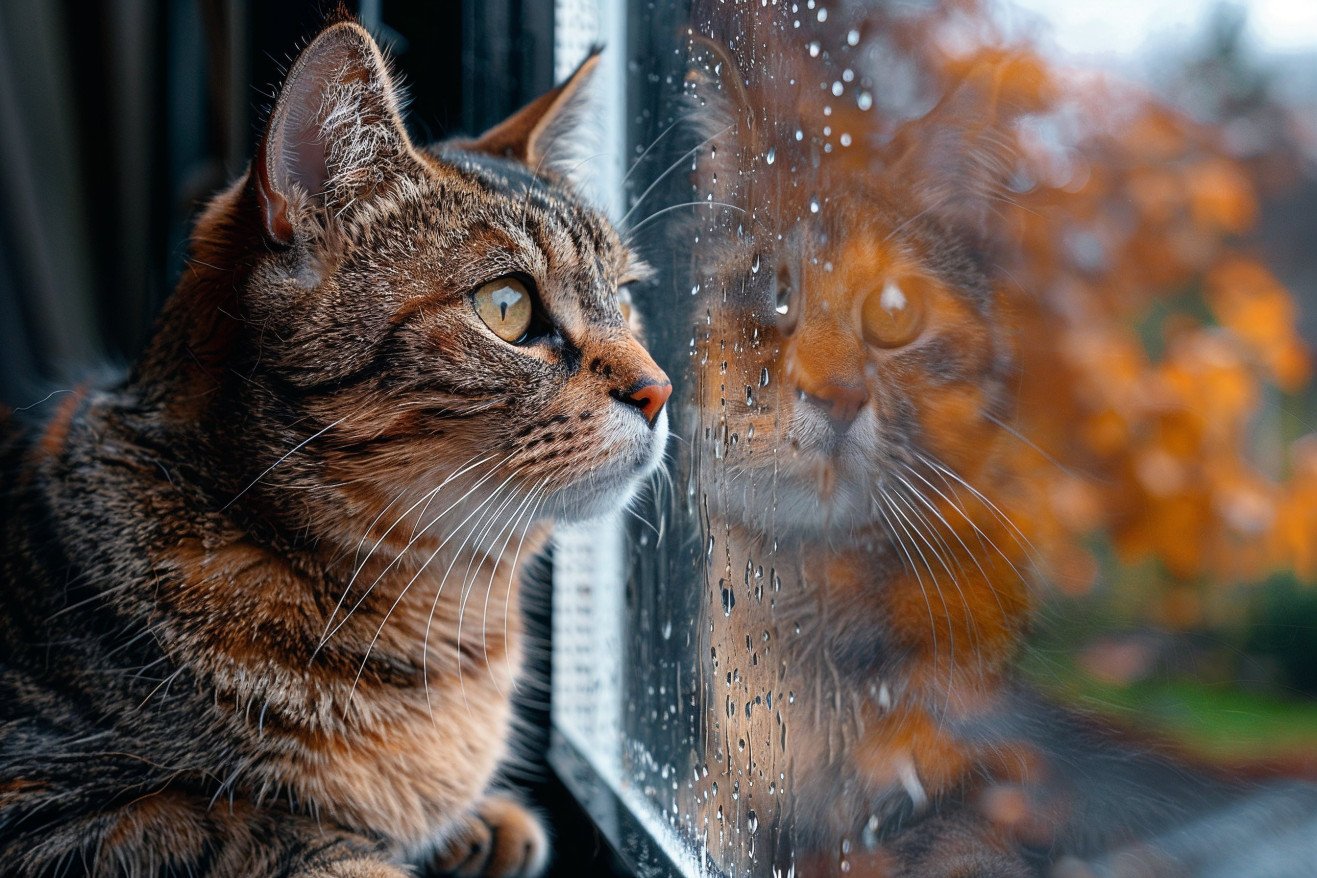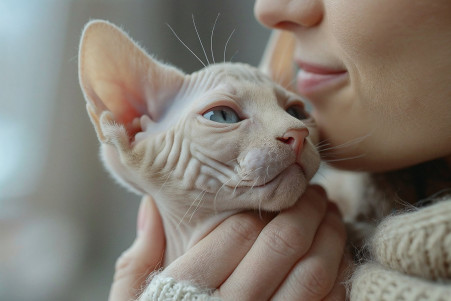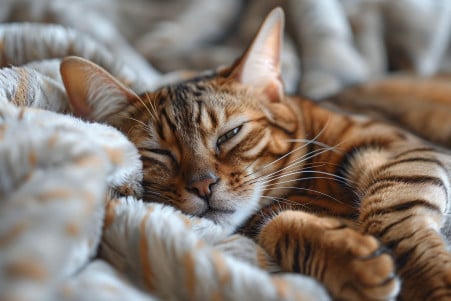Are Tabby Cats Hypoallergenic? Here's What the Science Says
23 May 2024 • Updated 22 May 2024

If you have allergies and are thinking about getting a cat, it's important to know whether tabby cats are hypoallergenic. This information can help you decide if a tabby cat is the right pet for you. Tabby cats are not hypoallergenic. All cats produce Fel d 1, a protein found in cat saliva, dander, and urine that is the primary allergen for humans. While some cat breeds may produce less of this protein, there is no cat breed that is completely hypoallergenic, including tabbies.
To determine how much cats produce allergens and whether tabby cats are hypoallergenic, we'll review the results of veterinary science, immunology, and genetic research. We'll also discuss information about feline allergen production, grooming behavior, and breeding research to help you understand what to expect if you're considering getting a tabby cat and have allergies.
Are tabby cats hypoallergenic?
How Cat Allergies Work and the Fel d 1 Protein
Cat allergies are caused by proteins in a cat's saliva, dander (dead skin cells), and urine, not their fur. According to ZYRTEC®, the Fel d 1 protein is the main allergen responsible for human allergic reactions. The amount of Fel d 1 that cats produce can vary, and this can impact the severity of symptoms like sneezing, a runny nose, and itchy eyes.
As WebMD explains, allergies are the result of an immune system that is too sensitive and treats harmless substances like Fel d 1 as dangerous invaders that need to be attacked. While some breeds are labeled as "hypoallergenic," the Purina Institute says there's no scientific proof that any breed of cat produces less Fel d 1 than others, and all cats have the potential to cause an allergic reaction.
The Fel d 1 protein is produced in a cat's sebaceous and salivary glands. When cats groom themselves, the protein is transferred to their skin and hair, where it eventually becomes dander and is released into the air. This is why it's not enough to avoid cat hair if you're allergic to cats.
Things That Impact Fel d 1 Levels in Cats
Genetics are a major factor in how much of the Fel d 1 allergen a cat produces. The Purina Institute explains that male cats produce more of the protein than female cats, and that neutered cats produce less of it.
On the other hand, PetMD explains that a cat's fur length and color don't impact how much Fel d 1 they produce. Despite popular belief, short-haired and hairless cats aren't necessarily better for people with allergies. The VCA Animal Hospitals point out that there's a lot of variation between individual cats, and that some cats of the same breed will produce much more or less Fel d 1 than others.
As a result, while some cat breeds are labeled as more "hypoallergenic" than others, the only way to know for sure how much Fel d 1 a cat will produce is to have them tested. An allergist can help you figure out which cats are most likely to work best for you based on your unique allergies.
Cat Breeds That Are More Hypoallergenic
There are a few cat breeds that are often recommended for people with allergies due to their lower levels of the Fel d 1 allergen. According to The Spruce Pets, some of the most popular hypoallergenic breeds are the Siberian, Balinese, Bengal, Russian Blue, and Sphynx. These cats have shorter hair or no hair at all, which can help reduce the amount of dander and allergens they produce.
However, Cat in a Flat points out that the amount of Fel d 1 an individual cat produces can still vary within these breeds, so it’s important to test your own reactions and sensitivities before adopting any cat. In fact, as Purina points out, the Siberian has a long, thick coat but is one of the least allergenic breeds.
While these breeds may be more suitable for people with allergies, it’s still important to manage cat allergens and create an allergy-friendly home to ensure you can live with a cat comfortably.
How to Reduce Cat Allergens and Live With Cat Allergies
To reduce the amount of cat allergens in your home, you can create an 'allergy-free' zone. The Asthma and Allergy Foundation of America explains that cleaning the home from top to bottom, including steam cleaning the carpets, and using high-efficiency particulate air (HEPA) filters can help remove airborne allergens. The Humane Society of the United States suggests keeping cats out of certain rooms and using HEPA air cleaners in every room of the house.
Bathing cats weekly and grooming them outside can also help reduce the amount of dander and saliva allergens they produce. However, Purina points out that bathing can be stressful for cats and the benefits are short-lived. Anti-allergen sprays and special cat foods like Pro Plan LiveClear may help neutralize the Fel d 1 protein. Medications and immunotherapy can also help control allergies, as per the American College of Allergy, Asthma & Immunology.
Many people with allergies can live with cats by taking these steps and using these treatments. That said, it's important to see an allergist and determine your specific allergies before getting a cat.
Concluding Thoughts: How to Find the Best Cat for People With Cat Allergies
The data from these studies sheds light on the many factors that can influence a cat's production of Fel d 1. For example, one study published in the PMC journal showed that salivary Fel d 1 levels varied widely between individual cats, with yearly averages that ranged from 0.4–35 µg/ml. Most notably, the researchers found that sex in neutered cats had no effect on Fel d 1 levels, and coat color and pattern were not reliable predictors of allergen production.
On the other hand, the study did show that age was a factor, with older cats having lower levels of Fel d 1. In addition, the researchers suggested that testing a cat's saliva multiple times could be used to identify "low-producer" cats with 90% accuracy.
Meanwhile, a report from Purely Pets Insurance offers a good summary of the cat breeds that are best and worst for people with cat allergies. It confirms that sex, neuter status, and coat color can all have an impact on a cat's allergen production. The report lists breeds like the Sphynx, Russian Blue, and Siberian as better options for people with cat allergies, while warning against the Persian, Maine Coon, and Siamese.
In the end, this data shows that individual variation is a major factor in a cat's Fel d 1 levels, regardless of breed. As a result, it's important for people with cat allergies to make sure that they're tested for their sensitivity to individual cats and not just breeds. This is especially important for people who are looking for a cat to adopt.


